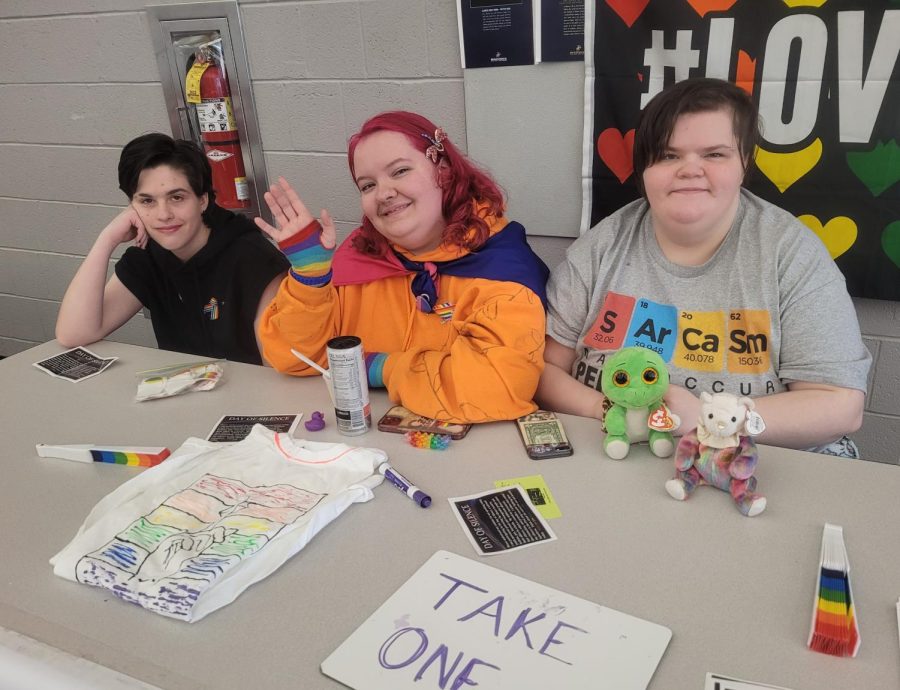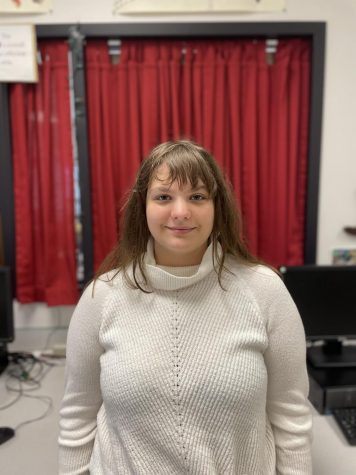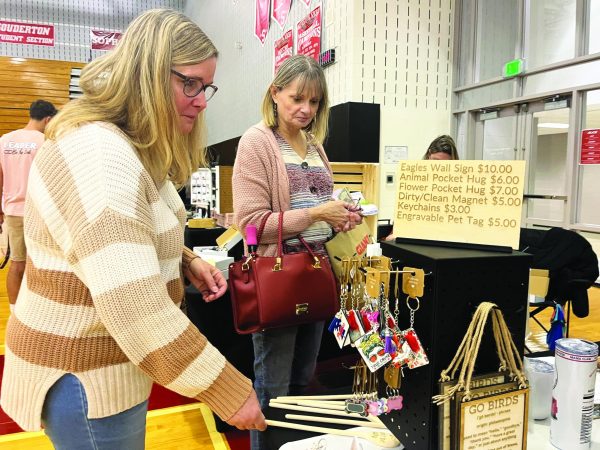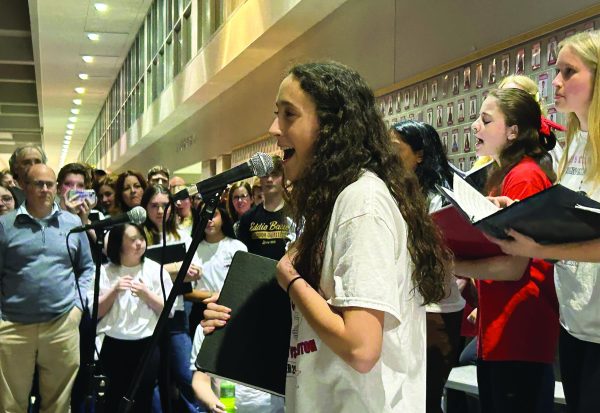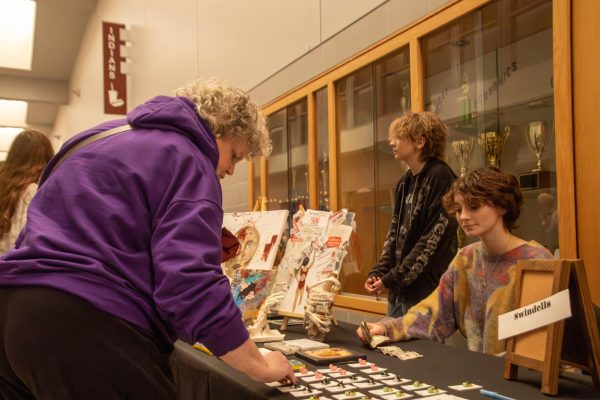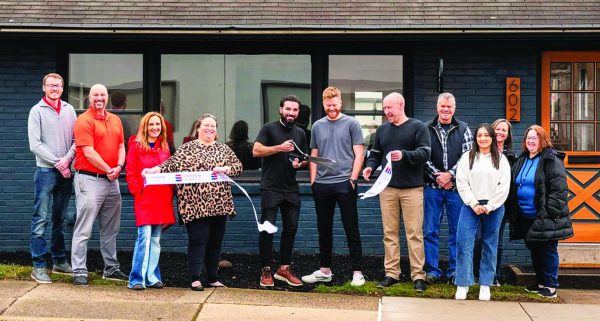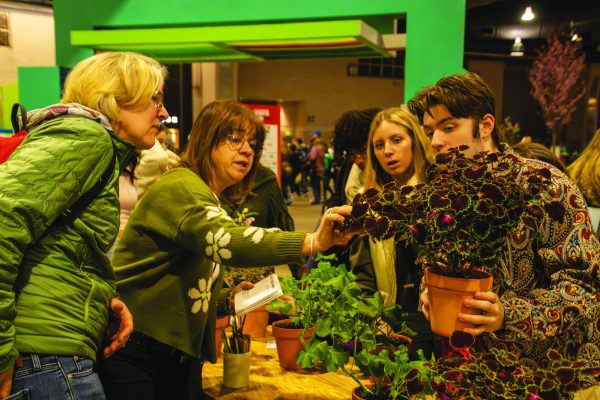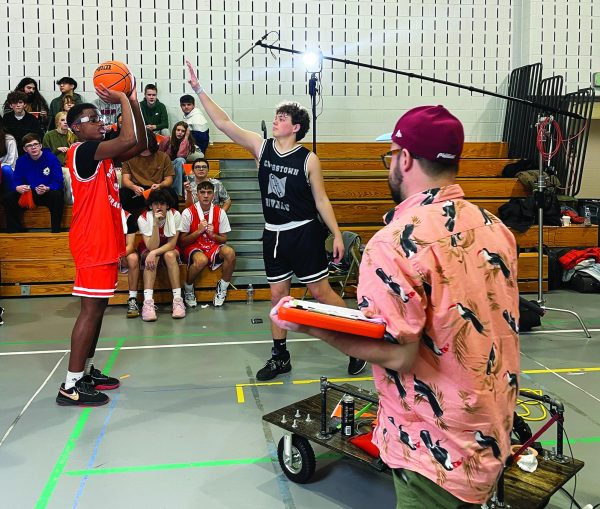GSA Day of Silence raises awareness for LGBTQ+ community
The Day of Silence was held on April 14.
Silent support… Showing support for the LGBTQ+ community, GSA members MacKenzie Sacks, Emma FitzGerald, and Periwinkle McDowell host a table to bring awareness to Day of Silence. All three of the GSA members participated in this year’s Day of Silence.
By taking a vow of silence, students participating in the Day of Silence aim to protest discrimination against the LGBTQ+ community and represent those who have lost their lives because of it.
According to GSAFE (formerly known as the Gay Straight Alliance for Safe Schools), an organization dedicated to promoting safe environments for LGBTQ+ students, the first Day of Silence was organized by a group of students at the University of Virginia in 1996.
Students across the country participated in the protest the following year.
Now, every second Friday of April is recognized as the annual Day of Silence.
According to Gay-Straight Alliance (GSA) advisor Allyson Fitzpatrick, the Day of Silence is “a day to honor those who have been silenced forever.”
GSA officer Reagan Lisius feels that Day of Silence is a symbolic event.
“By not speaking on Day of Silence, I feel as though I’m representing all the voices that have been silenced in the past, who can no longer speak out on these issues,” Lisius said.
According to Lisius, while the event was initially for support of those who had lost their lives due to hate crimes and similar events, she feels it also encompasses “people who have passed because of lack of attention to the cause.”
Circumstances like a lack of medical attention during the AIDS crisis or LGBTQ+ mental health also contributed to members of the community losing their lives.
“To me, [Day of Silence] really means people who have been silenced forever,” Lisius said, “who can no longer use their voice in any matter, who have truly and finally been oppressed.”
GSA officer Logan McCormick feels that the event is “a very solemn thing to do.”
“I know that the students who participate are usually very vocal, very active within their classes,” McCormick said. “When you have that voice that’s gone, I think it speaks volumes.”
Lisius feels that a big part of the Day of Silence is trying to educate people about the matter.
“You can’t ever force someone to learn,” Lisius said, “but you can at least try to expose them to what’s going on so it can be there in their mind.”
According to McCormick, one of the best things people can do to show support is participate, as both members of the LGBTQ+ community and allies are able to take part.
“If you haven’t participated in Day of Silence this year, participate next year,” McCormick said.
Lisius said that “strength in numbers” is a part of the protest.
“It’s really noticeable when a lot of people aren’t speaking,” Lisius said. “You step back and you go, ‘Wait, what’s going on?’ Then you want to know and then more people are educated and more people are exposed to it.”
Lisius also said that people should try to be aware of their own words and actions.
“I feel like a lot of people don’t really think before they speak or think about where they are before they speak,” Lisius said.
According to Lisius, people’s words can be very offensive, especially in an environment like high school where many people feel as though they can say whatever they please.
To learn more about the Day of Silence, visit gsafewi.org.

